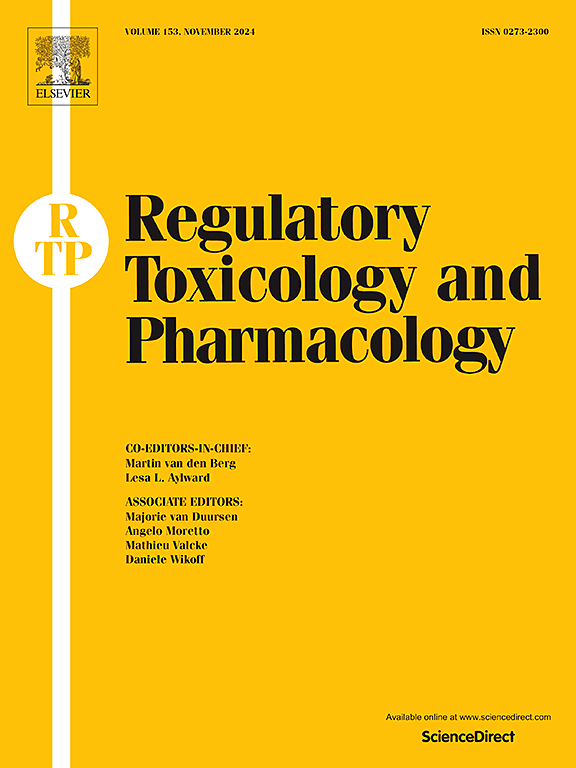药品中n -亚硝胺杂质的控制:推进现行CPCA框架并支持衍生稳健的化合物特异性可接受摄入量。
IF 3
4区 医学
Q1 MEDICINE, LEGAL
引用次数: 0
摘要
最近,卫生当局引入了致癌效力分类方法(CPCA)。在该模型中,来自最近文献的结构特征、行业建议和卫生当局进行的分析,提供了对亚硝胺杂质的潜在可接受摄入量(AI)的快速评估。与其他筛选监管值(如ICH M7毒理学关注阈值)一样,CPCA是保守的,可被视为最低风险管理框架。在亚硝胺类药物相关杂质(NDSRI)低于CPCA限制的情况下,该框架从毒理学角度提供解决方案(即不需要进一步的毒理学研究)。如果NDSRI高于CPCA限制,则该框架规定启动额外活动(即,CPCA不是唯一可能的限制)。CPCA和M7指南都描述了跨读方法,它们可以提供比一般模型更具体适用性的限制。使用现有的实验数据(体外或体内)是有价值的,以便提供更具体的限制。CPCA提供了一个框架;然而,数据应该允许改变人工智能从最初的结构评估,基于不断增加的数据,最终提高人工智能的精度。本文章由计算机程序翻译,如有差异,请以英文原文为准。
Control of N-nitrosamine impurities in drug products: Progressing the current CPCA framework and supporting the derivation of robust compound specific acceptable intakes
The carcinogenic potency categorisation approach (CPCA) has recently been introduced by health authorities. In this model, structural features from recent literature, industry proposals, and analyses performed by health authorities, provide a rapid assessment of the potential acceptable intake (AI) for a nitrosamine impurity. As with other screening regulatory values (such as the ICH M7 Threshold of Toxicological Concern), the CPCA is conservative and can be considered a de minimis risk management framework. In cases where a nitrosamine drug substance-related impurity (NDSRI) is present below the CPCA limit, the framework provides resolution from a toxicological perspective (i.e., no further toxicology studies are required). Where an NDSRI is above the CPCA limit, the framework provides for the initiation of additional activities (i.e., the CPCA is not the only possible limit). Read-across approaches are described in both the CPCA and M7 guidance and can provide a limit with more specific applicability than the general model. The use of available experimental data (in vitro or in vivo), is valuable in order to provide an even more specific limit. The CPCA provides a framework; however, data should permit changing the AI from initial structural assessment, based on increasing data, to ultimately increase precision of the AI.
求助全文
通过发布文献求助,成功后即可免费获取论文全文。
去求助
来源期刊
CiteScore
6.70
自引率
8.80%
发文量
147
审稿时长
58 days
期刊介绍:
Regulatory Toxicology and Pharmacology publishes peer reviewed articles that involve the generation, evaluation, and interpretation of experimental animal and human data that are of direct importance and relevance for regulatory authorities with respect to toxicological and pharmacological regulations in society. All peer-reviewed articles that are published should be devoted to improve the protection of human health and environment. Reviews and discussions are welcomed that address legal and/or regulatory decisions with respect to risk assessment and management of toxicological and pharmacological compounds on a scientific basis. It addresses an international readership of scientists, risk assessors and managers, and other professionals active in the field of human and environmental health.
Types of peer-reviewed articles published:
-Original research articles of relevance for regulatory aspects covering aspects including, but not limited to:
1.Factors influencing human sensitivity
2.Exposure science related to risk assessment
3.Alternative toxicological test methods
4.Frameworks for evaluation and integration of data in regulatory evaluations
5.Harmonization across regulatory agencies
6.Read-across methods and evaluations
-Contemporary Reviews on policy related Research issues
-Letters to the Editor
-Guest Editorials (by Invitation)

 求助内容:
求助内容: 应助结果提醒方式:
应助结果提醒方式:


